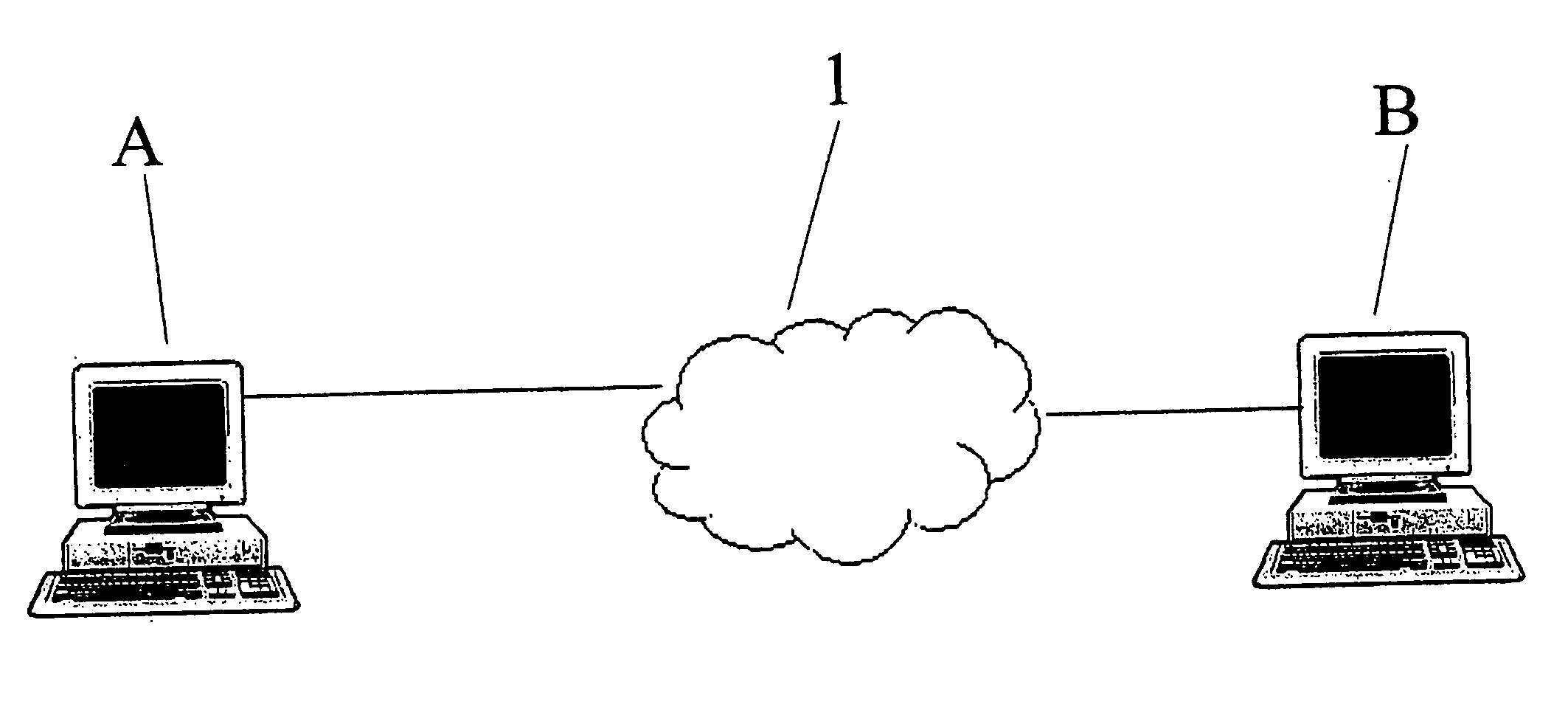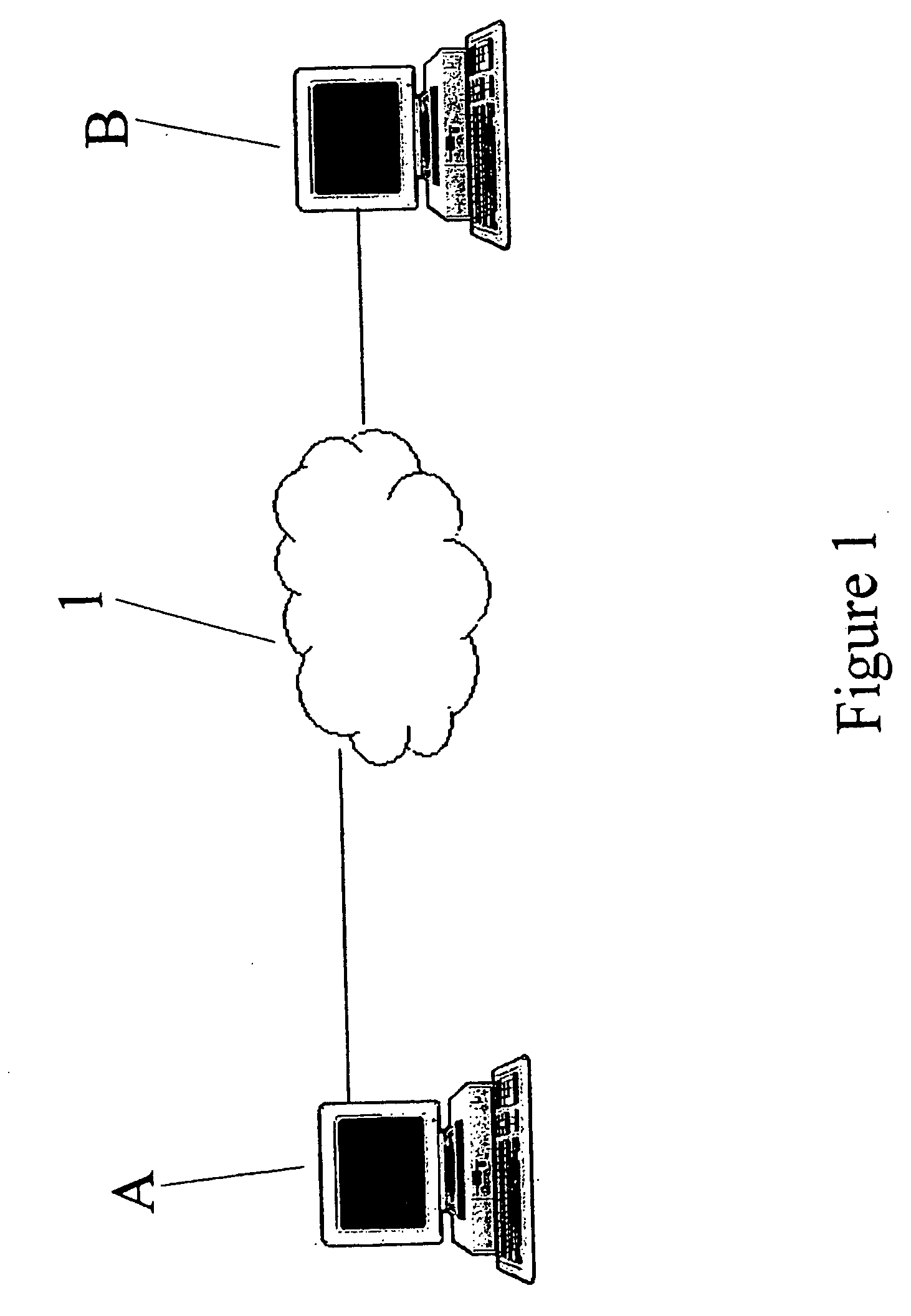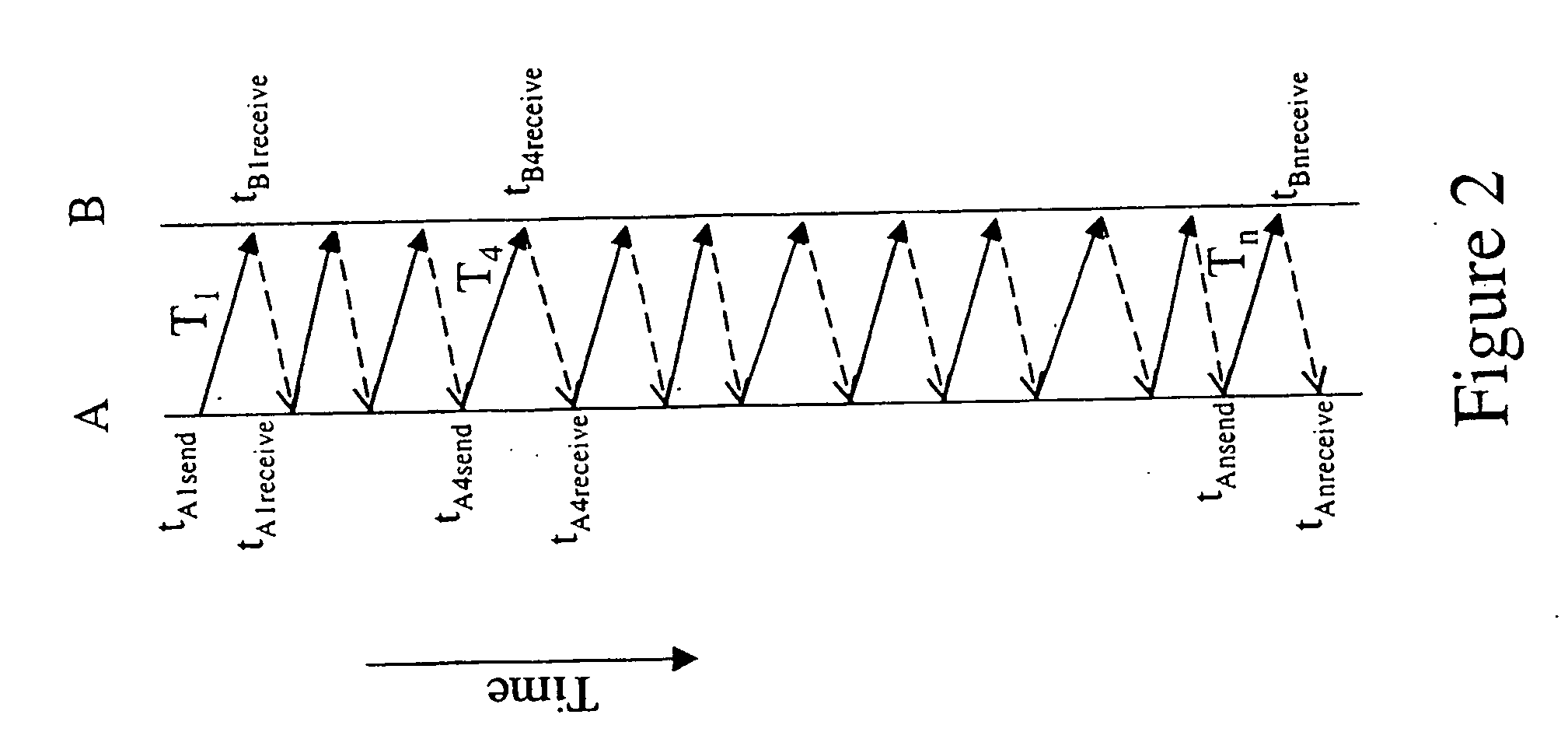Method of determining a timing offset between a first clock and a second clock in a communications network
a technology of communication network and timing offset, which is applied in the direction of electrical clocks, time interval measurement, transmission, etc., can solve the problem that jitter measurements do not give the single direction delay experienced by individual packets
- Summary
- Abstract
- Description
- Claims
- Application Information
AI Technical Summary
Problems solved by technology
Method used
Image
Examples
Embodiment Construction
[0015] Referring to FIG. 1 of the accompanying drawings there is illustrated a communications network 1 comprising a first terminal A and a second terminal B. In this embodiment of the invention, the first terminal A and the second terminal B are both PCs and the communications network 1 is an IP based network, for example a corporate Local Area Network (LAN).
[0016] The first terminal A and the second terminal B each comprises an internal hardware clock (not shown). The internal clocks of the first terminal A and the second terminal B are not synchronised and thus at a given time, a synchronisation or timing offset δ exists between the two clocks. The timing offset δ may be defined as:
δ=TB−TA (1)
[0017] where TA is the time indicated by the clock of the first terminal A and simultaneously, TB is the time indicated by the clock of second terminal B.
[0018] Whilst independently running clocks of PCs such as the first terminal A and second terminal B can be expected to keep reasonab...
PUM
 Login to View More
Login to View More Abstract
Description
Claims
Application Information
 Login to View More
Login to View More - R&D
- Intellectual Property
- Life Sciences
- Materials
- Tech Scout
- Unparalleled Data Quality
- Higher Quality Content
- 60% Fewer Hallucinations
Browse by: Latest US Patents, China's latest patents, Technical Efficacy Thesaurus, Application Domain, Technology Topic, Popular Technical Reports.
© 2025 PatSnap. All rights reserved.Legal|Privacy policy|Modern Slavery Act Transparency Statement|Sitemap|About US| Contact US: help@patsnap.com



